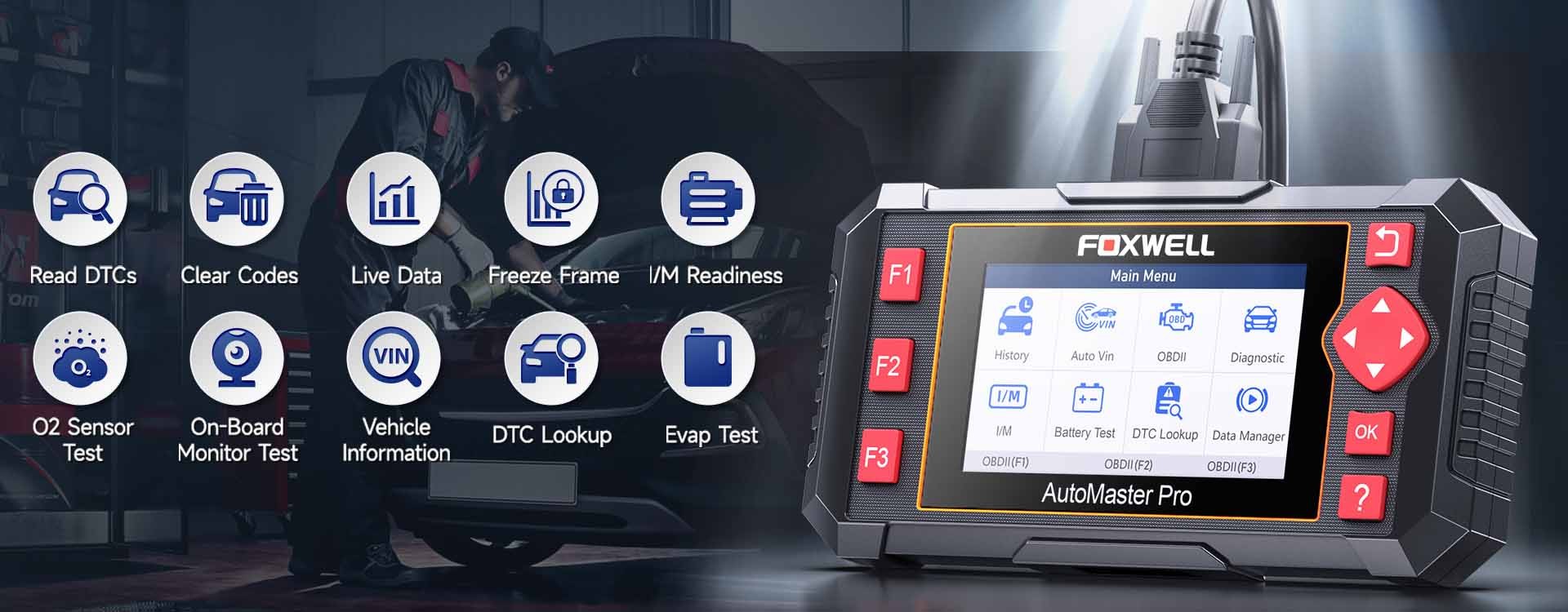That dreaded “Check Engine” light – it’s enough to make any car owner’s heart sink. But before you rush to the mechanic, did you know that your car is equipped with a powerful diagnostic system called OBD2? This system, standard in most modern vehicles, is your gateway to understanding and addressing many car troubles right from your garage.
In this guide, we’ll dive into the world of OBD2 and specifically focus on how an Obd2 Scanner With Throttle Relearn capability can be a game-changer for your engine’s performance. We’ll explore what the throttle body is, why it needs resetting, and how the right OBD2 scanner can empower you to restore your vehicle’s responsiveness and efficiency.
Understanding Your Throttle Body and the Need for Relearn
Think of your throttle body as the gatekeeper of air for your engine. It’s a crucial component that controls the amount of air flowing into the engine’s intake manifold. When you press the accelerator pedal, you’re essentially telling the throttle body to open wider, allowing more air to mix with fuel, which in turn generates the power to move your car.
Over time, however, the throttle body can become a victim of its own environment. Carbon deposits, dirt, and grime can accumulate inside, hindering its smooth operation. This build-up can lead to a range of performance issues, including:
- Rough idling: Your car might shake or vibrate uncomfortably when stationary.
- Poor acceleration: The engine feels sluggish and unresponsive when you try to speed up.
- Reduced fuel efficiency: You might notice more frequent trips to the gas station.
- Check Engine Light illumination: The car’s computer detects irregularities and triggers the warning light.
These issues often arise because the Engine Control Module (ECM), your car’s brain, relies on precise readings from the throttle body sensor. When deposits interfere, the ECM can misinterpret the throttle body’s position, leading to inaccurate air-fuel mixtures and compromised engine performance.
This is where a “throttle relearn” or “throttle body reset” becomes essential. This process recalibrates the ECM, helping it to accurately recognize the throttle body’s current state after cleaning or replacement. By resetting the throttle body, you’re essentially teaching the ECM to correctly interpret the signals again, restoring optimal engine operation.
Choosing the Right OBD2 Scanner with Throttle Relearn Function
Not all OBD2 scanners are created equal. While basic scanners can read and clear diagnostic trouble codes, resetting a throttle body requires a more specialized tool – an OBD2 scanner with throttle relearn capabilities. Here’s what to look for when selecting a scanner for this task:
- Advanced Service Functions: Ensure the scanner explicitly mentions “service functions” or “special functions.” These are the features that go beyond basic code reading and allow you to perform tasks like throttle body resets. Standard code readers typically lack this functionality.
- Throttle Relearn or Actuator Tests: Look for “Throttle Relearn,” “Throttle Body Reset,” or “Actuator Tests” in the scanner’s features list. These terms indicate the scanner can communicate with the ECM to initiate the relearn procedure.
- Bidirectional Control: Ideally, choose a scanner with bidirectional control. This advanced feature allows the scanner to not only receive data from your car but also send commands. For throttle relearn, a bidirectional scanner can instruct the ECM to actively relearn the throttle body position, ensuring a proper reset. Unidirectional scanners can only read data, limiting their ability to perform relearn procedures.
- Vehicle Compatibility: Always verify the scanner’s compatibility with your car’s make, model, and year. Some scanners have broader vehicle coverage than others. Check the manufacturer’s specifications to ensure it supports your specific vehicle and its systems.
- User-Friendly Interface: A scanner with an intuitive interface is crucial, especially for DIYers. Look for a device with clear menus, easy navigation, and straightforward instructions on the screen. A user-friendly design will make the throttle body reset process much smoother and less intimidating.
By prioritizing these features, you can confidently choose an OBD2 scanner with throttle relearn that is not only capable but also user-friendly, empowering you to effectively manage your vehicle’s throttle body maintenance.
Step-by-Step Guide: Resetting Your Throttle Body with an OBD2 Scanner
Let’s walk through the process of resetting your throttle body using an OBD2 scanner with throttle relearn functionality. While the exact steps might slightly vary depending on the scanner model and your vehicle, the general procedure remains consistent. For this example, we’ll outline the steps using a Foxwell NT809 scanner as a reference, but the principles apply to most capable scanners.
- Connect Your OBD2 Scanner: Locate the OBD2 port in your vehicle. It’s usually found under the dashboard on the driver’s side, near the steering column. Plug your OBD2 scanner securely into this port.
- Turn Ignition ON (Engine OFF): Turn your car key to the “ON” position, which powers up the car’s electronics, but do not start the engine. This allows the scanner to communicate with the vehicle’s systems without the engine running.
- Navigate to Service Menu & Throttle Relearn: Power on your OBD2 scanner and navigate to the “Service” menu (or similar, depending on your scanner’s interface). Within the service menu, look for options like “Throttle Relearn,” “Throttle Body Reset,” “Actuator Reset,” or “Special Functions.” Select the “Throttle Relearn” function.
- Follow On-Screen Prompts: The scanner will now guide you through the relearn procedure with on-screen instructions. These prompts might include instructions like pressing the accelerator pedal in a specific way or simply waiting while the scanner communicates with the ECM. Follow these instructions carefully.
- Initiate Reset and Wait for Confirmation: Once you’ve followed the prompts, initiate the throttle relearn process on the scanner. The scanner will communicate with the ECM to recalibrate the throttle body settings. Wait for the scanner to display a confirmation message indicating that the reset is complete.
- Turn Ignition OFF and Restart Engine: After the scanner confirms the reset, turn the ignition off for about 10-20 seconds. Then, restart the engine.
- Test Drive Your Vehicle: Take your car for a short test drive. This allows the ECM to further adapt to the newly reset throttle body under real-driving conditions. Pay attention to whether the issues you were experiencing, such as rough idling or poor acceleration, have improved.
By following these steps with your OBD2 scanner with throttle relearn, you can effectively reset your throttle body and potentially resolve common engine performance problems without needing to visit a mechanic.
What to Expect After Performing a Throttle Body Relearn
After successfully resetting your throttle body, you should anticipate some positive changes in your vehicle’s performance. Initially, the ECM will be in a learning phase as it adjusts to the recalibrated throttle body. This adaptation period is usually brief, lasting only a few minutes of driving.
Here’s what you can typically expect to see after a throttle body relearn:
- Smoother Idling: The most noticeable improvement is often a smoother and more stable idle. Engine vibrations and shaking at idle should diminish or disappear.
- Improved Acceleration Response: Your car should feel more responsive when you press the accelerator pedal. Hesitation or sluggishness during acceleration should be reduced.
- Potential Fuel Efficiency Gains: In some cases, a throttle body relearn can contribute to improved fuel economy as the engine operates more efficiently with a properly calibrated air-fuel mixture.
However, it’s important to note that if the underlying issue is more severe, such as a damaged throttle body or other engine component problems, a relearn alone might not completely resolve the symptoms. If problems persist after the reset, further diagnosis may be necessary.
Troubleshooting Common Issues After Throttle Body Reset
While throttle body resets are often effective, sometimes issues might linger or new concerns may arise. Here’s a troubleshooting guide for common problems encountered after a throttle body relearn:
- Persistent Rough Idling: If rough idling continues, even after the reset, consider checking the idle air control (IAC) valve. It might be dirty or malfunctioning and require cleaning or replacement.
- Check Engine Light Remains On: If the “Check Engine” light stays illuminated after the reset, use your OBD2 scanner to read the diagnostic trouble codes again. There might be new codes indicating other underlying issues that need attention, such as sensor problems or other component malfunctions.
- Inconsistent Acceleration: If acceleration remains uneven or hesitant, the throttle body itself might still be dirty and require thorough cleaning. Alternatively, the accelerator pedal position sensor could be faulty and need replacement.
- No Improvement in Fuel Efficiency: If you don’t observe any fuel economy improvements after the reset, other factors might be contributing to poor mileage. These could include clogged fuel injectors, a malfunctioning oxygen sensor, or even tire pressure issues.
In conclusion, an OBD2 scanner with throttle relearn is a valuable tool for diagnosing and addressing common engine performance issues related to the throttle body. By understanding how to use this tool effectively and what to expect, you can take a proactive approach to vehicle maintenance and potentially save time and money on repairs. However, remember that for complex or persistent problems, seeking professional mechanic assistance is always recommended.
Conclusion
Investing in an OBD2 scanner with throttle relearn capability empowers you to take control of your car’s health. This tool offers a cost-effective and efficient way to address engine performance problems stemming from a miscalibrated throttle body. By recalibrating your vehicle’s ECM, you can restore smooth idling, improve acceleration, and potentially enhance fuel efficiency. With the right scanner and a little know-how, you can confidently perform throttle body resets and ensure your vehicle continues to run at its best.
FAQs
Can you reprogram ECU with OBD2?
No, most standard OBD2 scanners are not designed for ECU reprogramming. ECU reprogramming is a more complex procedure that typically requires specialized tools, software, and expertise beyond the capabilities of a typical OBD2 scanner.
What scan tool can reprogram PCM?
Reprogramming a Powertrain Control Module (PCM) usually necessitates professional-grade scan tools, often referred to as J2534 pass-thru devices. Alternatively, manufacturer-specific tools like Ford IDS, GM Tech 2, or Chrysler WiTech are used by dealerships and specialized repair shops for PCM reprogramming.
Can you reset ECU with a scan tool?
Yes, many OBD2 scan tools can perform an ECU reset. This typically involves clearing diagnostic trouble codes and resetting adaptive learning parameters within the ECU. However, this is distinct from reprogramming the ECU’s software or firmware.

